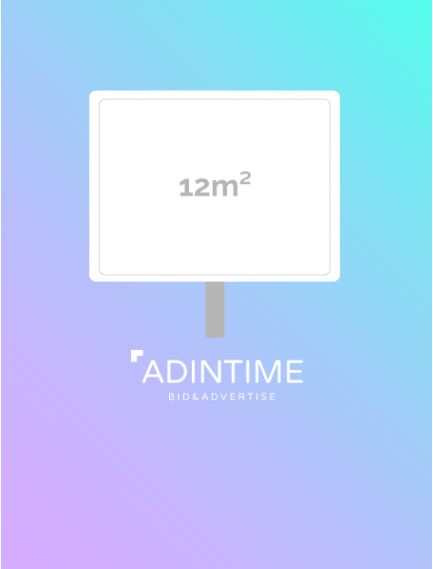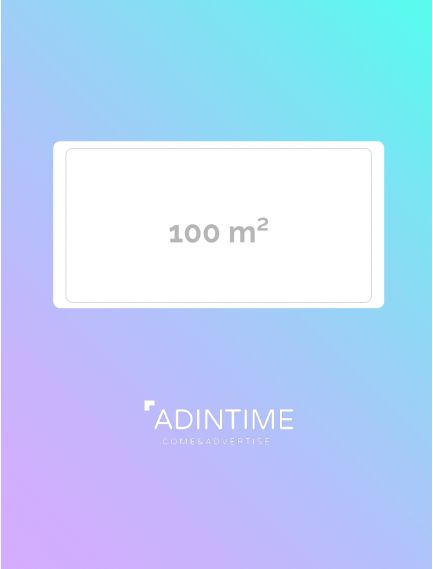CPM (cost per thousand impressions) refers to the rate paid by an advertiser to display an online ad a thousand times. Discover a clear definition of CPM, its precise calculation and how to use it effectively in your digital advertising strategy.
What is CPM and how is it calculated?
Before we go any further, let's take a moment to clearly understand what CPM is and how you can easily calculate it.
No complicated jargon, just the basics to get you comfortable with this essential concept in digital advertising.
CPM - a clear, concrete definition
CPM, or cost per thousand impressions, is a billing method used in online advertising. It represents the cost you, as an advertiser, pay for your ad to be displayed 1,000 times on a given platform.
Each display of your ad is called an impression. CPM therefore enables you to measure the cost of making your message visible to your target audience.
Simple formula for calculating CPM
Calculating CPM is relatively straightforward, and can be done using the following formula.
CPM=Total cost/Total number of impressions x 1,000
For example, if you invest 500 euros in an advertising campaign generating 50,000 impressions, the calculation would be :
CPM=(500 / 50000)×1000=10 euros
This means you pay 10 euros for every 1,000 impressions of your ad.
CPM, CPC, CPA: what are the differences for your advertising strategy?
It's important to distinguish CPM from other pricing models commonly used in digital advertising, such as CPC (cost per click) and CPA (cost per acquisition).
- CPM (Cost per Thousand): You pay per 1,000 impressions, regardless of user interaction with the ad. This model is ideal for increasing brand awareness.
- CPC (Cost per Click): You only pay when someone clicks on your ad. This model is ideal for driving traffic to your website.
- CPA (Cost per Acquisition): You pay when the user performs a specific action (for example, a purchase or registration). This model is effective for conversion-driven campaigns.
The choice between these models depends on your specific marketing objectives.
Why use CPM for your digital campaigns?
CPM offers a number of advantages for advertisers, especially SMEs looking to strengthen their online presence.
What are the real benefits of the CPM model for your company?
One of the main advantages of CPM is that it guarantees the visibility of your ad to a wide audience. By paying for a defined number of impressions, you ensure widespread distribution of your message. This model is particularly effective for campaigns designed to increase brand awareness.
According to a study by the Online Publishers Association, exposure to display advertising can increase the time spent by Internet users on sites by an average of 50%.
When should I opt for CPM rather than another advertising model?
CPM is particularly suitable when your main objective is to increase the visibility of your brand or product. For example, when launching a new product, a CPM campaign can help you reach a large audience quickly.
On the other hand, if your objective is to generate clicks or conversions, models such as CPC or CPA may be more appropriate.
Risks and limits to be anticipated with a CPM strategy
Although CPM offers increased visibility, it doesn't necessarily guarantee interactions or conversions. It's therefore important to ensure that your ads are relevant and attractive to your target audience.
What's more, a high CPM may indicate that your campaign isn't as effective as you'd hoped.
It's therefore essential to regularly monitor the kpi of your marketing campaigns and adjust your strategy accordingly.
Recent developments in CPM: what you need to know
The digital advertising landscape is constantly evolving, and CPM is no exception.
The concrete impact of artificial intelligence on CPM
Artificial intelligence (AI) is playing a growing role in the optimization of CPM campaigns.
Thanks to AI, it's now possible to target audiences more precisely, optimize bids in real time and improve ad relevance. This can lead to a reduction in costs and an increase in the effectiveness of advertising campaigns.
How do programmatic platforms transform CPM costs?
Programmatic display platforms automate the buying and selling of advertising space, simplifying your marketing planning. This automation can lead to lower costs and better allocation of advertising budgets.
CPM and mobile advertising: a strategic challenge for your company
Today, mobile advertising is a must. More than half of all Internet users browse primarily on smartphones. So adapting your CPM strategy to mobile media is essential to effectively reach your audience.
CPM on mobile vs desktop: understanding the differences to invest more effectively
It's important to understand the differences between mobile and desktop CPM campaigns. On mobile, advertising space is limited, often resulting in a slightly higher CPM. But this investment is often justified by a more engaged audience.
According to a recent study, mobile ads have an average interaction rate twice that of desktop ads. In practical terms, this means that your mobile ads can generate more engagement, even if they cost a little more upfront.
The importance of the mobile user experience in your CPM campaigns
User experience (UX) is particularly important in your mobile CPM campaigns. An intrusive ad or one poorly adapted to mobile screens risks increasing your CPM without producing satisfactory results.
So take the time to create smartphone-friendly ads to maximize the impact of your CPM budget.
How to optimize your CPM for better advertising performance?
Managing your CPM campaigns means knowing how to reduce your costs while maintaining excellent visibility. Here's how to do it.
Best practices for reducing your CPM without losing quality
The key to lowering your CPM while maintaining high quality is precise audience targeting. The more precise your targeting, the more relevant your ads will be, and the lower your costs.
In addition, favour less competitive advertising spaces and adopt innovative formats. These small actions often enable you to obtain a much lower CPM without sacrificing your results.
Integrate CPM into an ROI-oriented approach
CPM shouldn't be your only indicator. To truly optimize your campaigns, it's essential to measure return on investment (ROI).
In concrete terms, this means always checking whether your ad impressions generate actual visits, clicks or sales.
To do this, consider integrating other metrics such as click-through rate (CTR) or cost-per-acquisition (CPA). This approach gives you a better understanding of the real effectiveness of your CPM campaigns.
KPIs complementary to CPM to measure your success in concrete terms
In addition to CPM, several other key performance indicators (KPIs) are essential for a complete analysis. Among the most useful are
- Click-through rate (CTR), which measures the real interest of Internet users in your advertising.
- Cost-per-acquisition (CPA), which tells you the real cost of each sale or registration obtained.
- Conversion rate, to know precisely whether your target audience is taking the desired action.
These additional indicators will help you better manage your campaigns and justify your marketing investments to your management.




 Top 30 best ads musics
Top 30 best ads musics
 The influence of advertising on purchasing behavior
The influence of advertising on purchasing behavior
 Top 30 best ads 2021 in France
Top 30 best ads 2021 in France
 Top of the most listened podcasts in France
Top of the most listened podcasts in France
 This Year Marketing Calendar
This Year Marketing Calendar
 Facebook Ads Library: The ultimate guide to winning campaigns
Facebook Ads Library: The ultimate guide to winning campaigns
 How to prepare your advertising campaigns for Christmas?
How to prepare your advertising campaigns for Christmas?
 The top 20 ad films of the year
The top 20 ad films of the year
 Example of a unique selling proposition
Example of a unique selling proposition
 Advertising storyboard: how to structure your campaigns
Advertising storyboard: how to structure your campaigns










